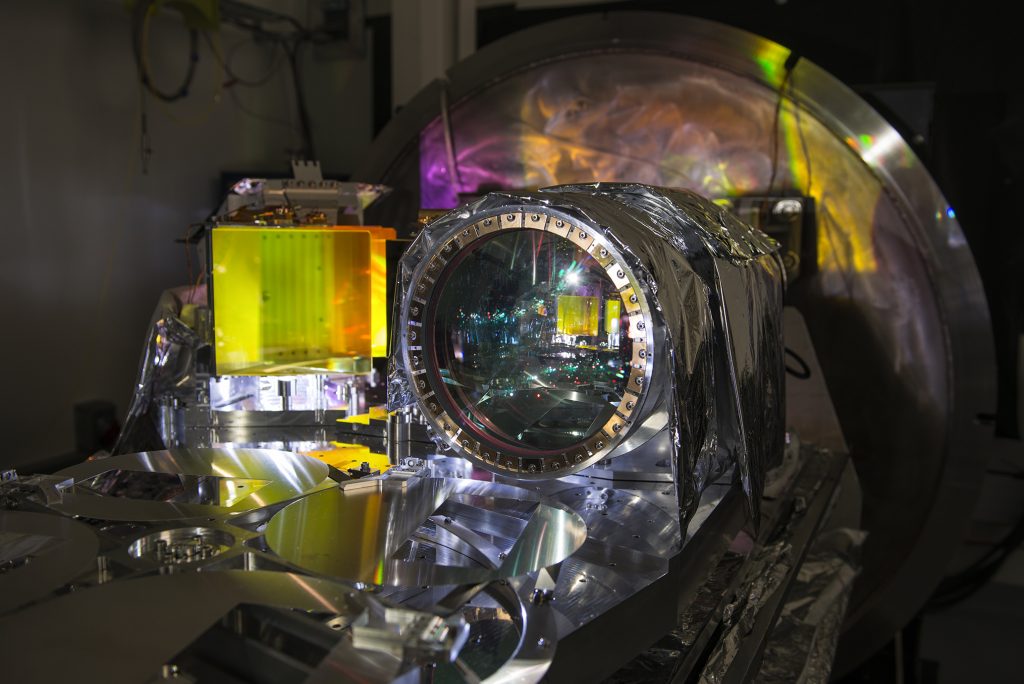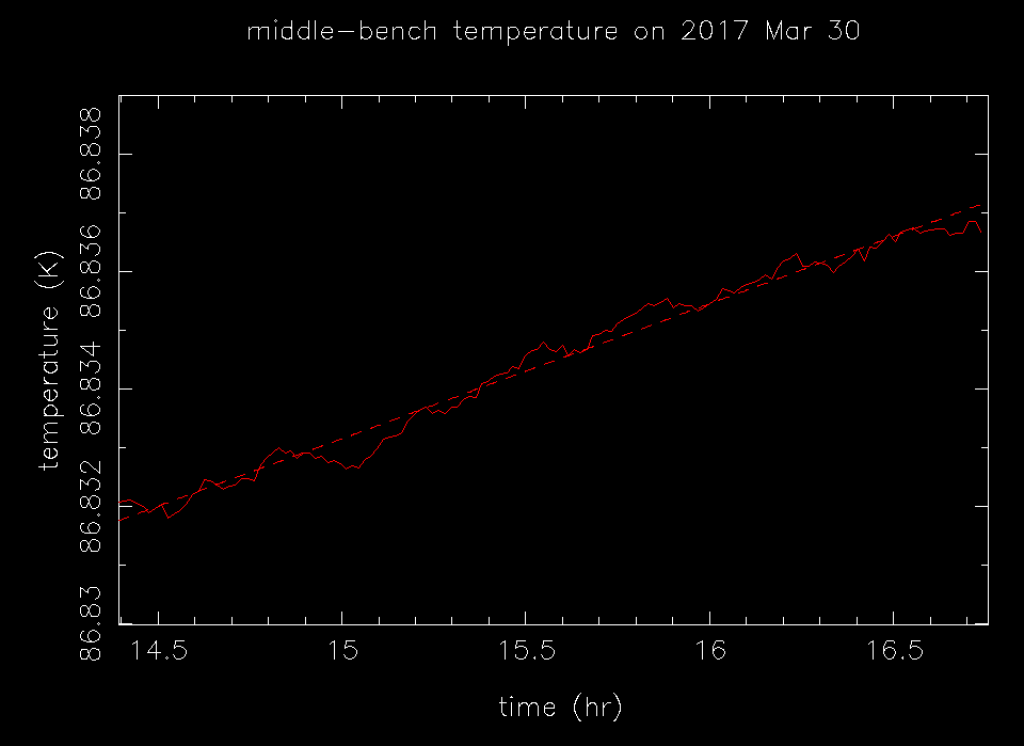2017 April: Another cooling cycle in progress for SPIRou
The SPIRou spectrograph has just started a new cooling cycle
Following the previous cooling cycle and the first in-lab images recorded last month, a complete re-alignment of the main optical components (the pupil slicer, the off-axis parabolic collimator, the folding flat mirror and the camera) was carried out at ambient temperature to improve the overall spectrograph focus.

In particular, the position of the pupil slicer on the one hand, and of the fold mirror on the other hand, with respect to the parabola were re-adjusted to a precision of about 100 µm. The detector focus was also shifted by about 300 µm with respect to the camera. The new in-lab images are now expected by the end of next week; they should highlight the last focusing steps for the spectrograph to be accurately tuned and ready for the full series of validation tests.
Another goal of this new cryogenic cycle is to further improve on the temperature stability within the spectrograph, thanks to a better control on the detector temperature. This is indeed a key parameter in order to achieve the desired radial-velocity precision of 1 m/s required for SPIRou to behave as specified. The aim is to stabilize the temperature of the main spectrograph optical elements to a precision better than 2 mK – a level that we reached in the last 2.5 hrs of the first cryogenic cycle despite the small temperature drift induced by the thermally unregulated detector.
This first result is already quite promising and suggests that we should be able to reach our goal regarding thermal stability provided we can better regulate the temperature of the detector and attendant electronics (sidecar).
These activities were performed by the IRAP/OMP team with remote contributions from NRC-H (Victoria, Canada) and UdeM (Montreal, Canada).

Closing of the SPIRou spectrograph before a new cooling cycle, in Toulouse @IRAP/OMP (©SPIRou – IRAP/OMP)



